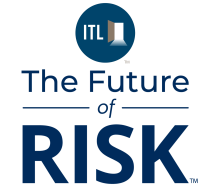"Best practices" are on the docket at every leadership offsite, conference panel and board-level meeting. But as currently acted on, best practices don't amount to much more than "doing a bit better."
A vague and watered-down expression can only result in equally vague and watered-down improvement measures: maybe a new dashboard, a revised call script, new key performance indicators (KPIs), a new customer relationship management (CRM) system. Sure, a dollar might be saved here or there. But what's needed is bold, lasting, transformative change.
To truly achieve "best practices," meaning evidence-based, scalable, and continuously refined over time, insurers would need to undergo a complete operational overhaul. The problem is, that kind of overhaul is an unappealing prospect—ripping out one system and trying to replace it with another can mean a slowdown in productivity and a focus on change management, rather than the work of actually doing insurance. Moreover, it can be controversial, disruptive, and highly visible—three things insurers tend to avoid, especially when margins are thin across many lines of business. Major change risks rattling investor confidence, unsettling personnel, and triggering concerns from customers and board members alike.
But how much of this resistance to fundamentally reexamine insurance operations is truly about protecting against disruption—and how much is a reluctance to think in new ways? The industry has long been defined by its conservatism, and that mindset continues to shape its decision-making. When younger professionals think of insurance, they picture fluorescent lights, thin cubicles, outdated software—nothing that relates, say, to an intuitive digital app. There's safety in legacy processes. "That's how we've always done it," the thinking goes. "It's worked so far. Our people are used to it. Why do things differently?"
But this needs to change. Introducing AI to areas of insurance that aren't yet using it can provide the necessary overhaul, one that fundamentally reimagines how agents do their work and how insurers collect, analyze, and apply data that will help them.
Fortunately, this transformation no longer needs to be abrupt or alienating. Today's technology allows insurers to roll out change in a piecemeal, custom-tailored way—minimizing disruption while maximizing long-term impact.
The result won't just be checking a "best practices" box on paper. It will mean real operational improvements: higher margins, greater employee satisfaction, an easier time attracting younger talent amid a talent crisis, and higher customer satisfaction—all of which can help reframe the reputation of an industry long seen as inhuman and overly bureaucratic, especially in light of recent events.
Forget the Firm Handshake—Focus on the Data
First, data collection. Over the past decade, insurers have leaned on broad metrics like total premiums written, retention rates, and revenue per agent. But these numbers are too general to offer meaningful insight. They tell us what happened—but not why. Sure, we know this agent wrote this many policies in the past year. But are we any closer to understanding what actually drove that performance?
AI is often praised for its ability to zoom out—processing and connecting thousands of data points far beyond what the human mind can track. But what's underrated is its ability to zoom in. With the right inputs, AI can deconstruct the behavior of top producers, revealing the subtle habits that set them apart from their peers. It's not about collecting the most data—that just leads to a glut. It's about collecting the right data.
Traditional thinking still dominates how many executives explain producer success. They'll chalk it up to someone's alma mater, a trusty handshake, a family legacy in insurance—or fall back on vague clichés like "work ethic" or "wanting it more." The problem is, these explanations frame success as innate and unteachable. If top producers are simply born with it, then there's no hope—or strategy—for helping average producers improve.
Top producers' inner workings can be uncovered with the help of AI. It could be the speed and timing of their follow-ups. Or the exact phrasing they use to tailor pitch strategies to different clients. Or even their ability to strike the perfect balance between persistence and discretion. How a producer structures their day for maximum efficiency can also create ripple effects that lead to higher conversion rates.
Insurers need to strip away the mystique of high performance—not just to help average producers improve, but to show that success isn't luck or legacy; it's a learnable system. When producers can see the path, they're more likely to walk it—and more likely to stay.
Define "Best Practices," Not "Somewhat Better Practices"
Yet even if AI can generate accurate observations and build a data-driven template for the ideal agent, those insights won't translate into better performance if producers are still asked to use CRM systems they're reluctant to go into. This is the biggest bottleneck to achieving best practices: The systems meant to support agents are often the very ones holding them back.
The select few from the younger generation who are genuinely excited about working in insurance often become jaded quickly—usually thanks to the daily frustrations of using clunky CRM systems. All it takes is one lunch, one venting session with a friend in finance or tech, to realize how far behind their tools really are—and to start thinking about jumping ship.
These systems often demand additional work: manual data entry using clumsy interfaces with little to no integration with calendars or phones. Worse, the systems lack AI-driven insights—so agents are forced to treat every lead the same, regardless of how cold or warm it is. It's no wonder turnover rates among agents remain so high.
Incorporating AI into these systems isn't just a promising retention strategy for policyholders—it's a powerful one for agents, too. Success breeds success, so when they can instantly see what practices work, what paths to take to close a sale, they'll want to do more. It's human nature. In this case, advanced technology doesn't strip the job of its humanity—it restores it. It gives agents space to focus on what drew them to the field in the first place: building lasting, mutually beneficial relationships with clients.
But ease and humanity aren't the only reasons agents stay motivated and loyal to their agency. There's also a financial incentive. Modern AI-powered systems identify cross-selling and upselling opportunities that might otherwise go unnoticed, letting agents maximize their commissions.
Provide More Data Points to Underwriting
Just as performance analysis has historically relied on too few data points, underwriting has long been constrained by limited inputs—typically just credit scores and claim histories. But consumer behavior is evolving too quickly, and often unpredictably, for insurers to keep relying on such narrow datasets.
AI allows a far more diverse range of data points to be taken into account. It can factor in social media activity, purchasing behavior, and real-time insights from Internet of Things (IoT) devices. For example, telematics in vehicles enables insurers to monitor driving habits continuously, allowing for dynamic premium adjustments based on real-world behavior rather than outdated, static models.
For too long, insurers have been playing catch-up. Some lag times have shortened, but we should be aiming to eliminate the lag entirely. Any delay just measures how much margin is leaking. For the first time in history, we're within reach of truly real-time risk pricing.
Underwriters shouldn't fear an AI-driven overhaul of their sector. Just like producers, they didn't enter this industry to be buried in repetitive administrative work—only to be blamed for every oversight. With AI handling what it's best at, like fact-checking and surface-level analysis, underwriters can return to what they're best at: making high-level statistical judgments and strategic decisions.
Expect Regulatory Pressure From the States, Not the Federal Government
Even with the prospect of federal deregulation under the current administration, insurers shouldn't assume a more relaxed compliance environment. Several states, especially California, are already enacting stricter environmental regulations in response to escalating wildfire risk—putting pressure on insurers to offer broader coverage in high-risk zones. At the same time, backlash over prior authorization delays in health insurance is gaining political traction, with new legislation on the horizon. Insurers that move too slowly could face not just financial penalties but long-term reputational fallout.
AI can help insurers stay ahead of the U.S. regulatory maze by monitoring policy changes in real time, flagging discrepancies across states, and identifying inconsistencies in claims, contracts, and internal processes. In a market where compliance expectations differ across all 50 states, these capabilities are becoming indispensable—especially for regional carriers aiming to scale nationally without stumbling into regulatory blind spots.
Complying with anti-discrimination laws is another area where AI can make a real impact. But its value goes beyond just staying compliant—it creates fairer, more consistent decision-making that can help shift public perception. The insurance industry has faced long-standing scrutiny for biased practices, and AI—if used responsibly—can be a tool to change that narrative.
Know the Risks—But Don't Overstate Them
While AI holds real promise for improving sales, underwriting, and compliance, insurers shouldn't jump in without a clear plan. Regulators are becoming more cautious—and in some cases, more aggressive—about how AI is used. Without thoughtful implementation, AI may see the expected efficiencies undone by compliance issues.
Insurance is, by nature, a risk-averse industry—understandably so. The job, after all, is to anticipate consequences before they happen. But when it comes to AI, many insurers are overstating the risks in ways that aren't rational. The greater danger isn't adopting AI too soon—it's falling behind as AI becomes the standard across every other industry.







